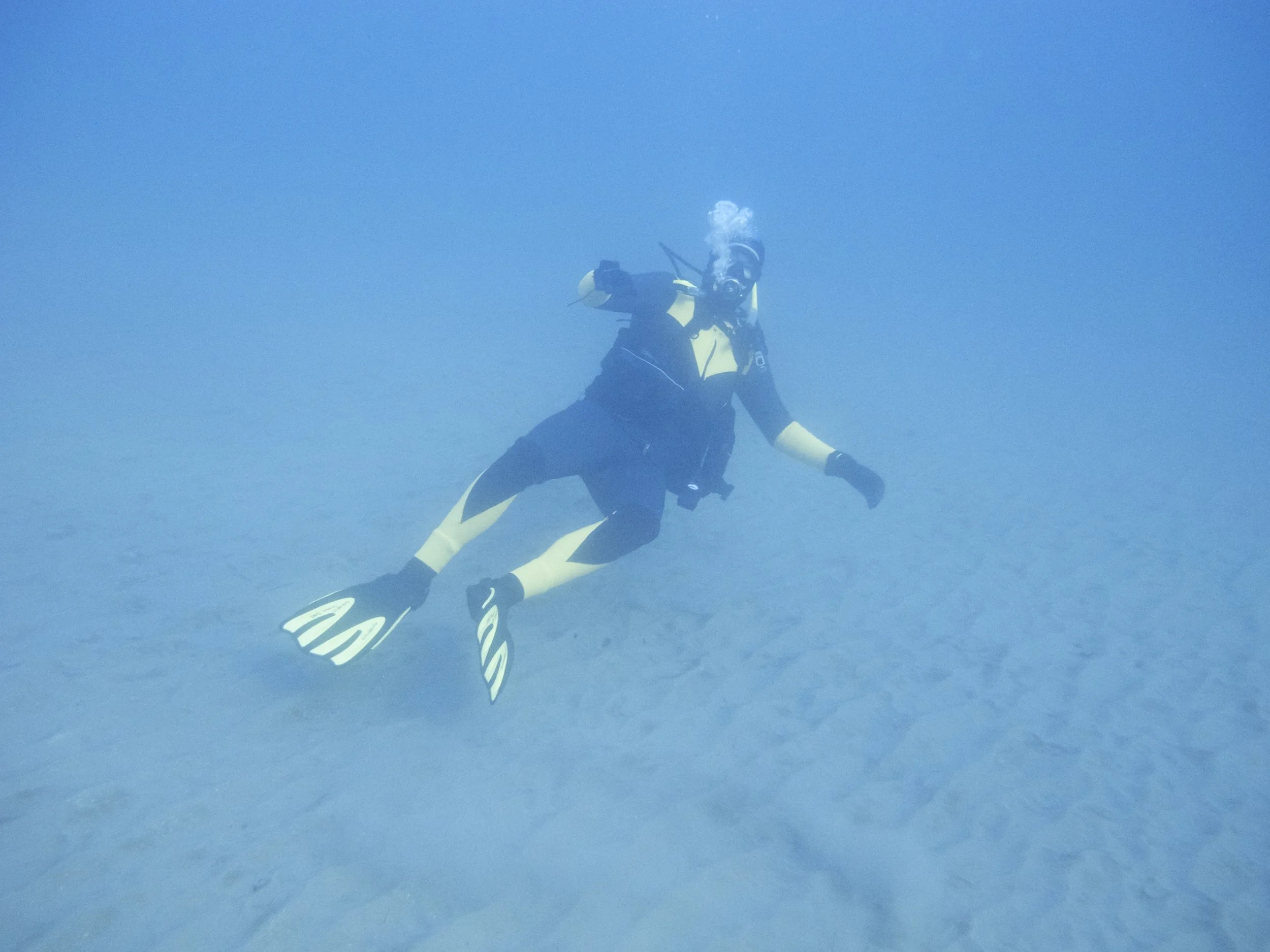A wise business leader once told me: “David the only things in life worth doing are hard.”
Scuba diving in California is like Enterprise sales--it’s hard. Planning of the trip, preparing your gear, 50 degree water temperature and aggressive currents all make for a challenging experience. It’s these challenges that make the experience so rewarding. Because just like a sales meeting where you can prepare your slides, have your talking points, outline the agenda, etc; but cannot control what the customer might say; with scuba diving in California you can never control what the ocean might do. The key, just like a sales meeting that goes sideways, is being able to steer your group in a safe direction so that you live to dive another day.
If you ask most California scuba teachers of all the students they certify each year how many become regular California divers? The numbers are roughly 15%. The vast majority of scuba diving in done in tropical locations where one can pay for a fully guided tour and do little more than put on gear and jump into the water. Diving in California is dramatically different.
This challenging environment is what I find so appealing. Unlike other hobbies where the only limiting factor might be the weather, cold water diving has many factors to consider. First is the swell. Regardless of rain or blue sky, the amount of wave action is the single biggest prohibitor to diving in CA. Typically, I will check Swellwatch a week ahead of my planned dive to identify if there is a possibility of going in the water safely.
The second step is gear preparation. This involves at least two steel scuba tanks, a wetsuit, 32lbs of lead, 12mm booties, snorkel and mask, 5mm gloves, 12mm hood, knife, safety tube, regulator, flashlight. If you forget one of these items in your checklist---you won’t be diving that day. To ensure that I have everything required, I’ve developed a spreadsheet checklist that I go through the night before to ensure everything is prepared. Oh yeah, and this is only the gear preparation for me--usually I walk-through the checklist for at least one other person, sometimes two.
Then the drive to your location which usually takes between two-three hours. Carmel for example is two hours--without traffic :)
Once you get to the desired dive-spot it’s time to look at the waves. Rip tides, longshore currents, algae bloom, etc. are just a few things to observe before entering the water. If, for example, one decides to dive Monastery Beach, watching the wave size is particularly important. (See Picture)
Monastery Beach October 9, 2016
After you’ve decided to dive, you then need to map your course. This involves standing on land and using your compass to understand the logistics and to determine the dive path you will follow.
After completing this pre-dive preparation, it’s time to gear up. This involves taking the aforementioned amount of gear and, starting with the wetsuit, putting each item on one at a time. By the time I have all my gear on, I’ve added an additional 82 lbs to my body. This additional weight is the single biggest reason diving in cold water is so challenging. Because after you’ve added 30% more weight to your body, you now have to walk into the water and control your buoyancy. The entry and exit of the water is where many injuries occur. The amount of exertion needed to get into the water cannot be understated---again, diving off a boat in the tropics is so much easier.
After you finally reach the water, you are greeted with a refreshing 54 degree bath---that’s at the surface, it’s usually in the high 40s at depth. In most cases you are sweating so much wearing your 7-13mm wetsuit and having walked to the water’s edge, that lying in the water on your back is the most desirable position while you catch your breath.
Now that you’ve made it into the water, your group decides to go down and have fun. As you descend to 10, 20 then 30 feet and start to follow your planned path that you first thought about and began researching over seven days ago, something you were not expecting happens---tide surge. Because the surge is so strong, kicking does not move you anywhere. All of your preparation is for naught. All of the gear, the time, the checklist, mean nothing now, because, just like in a sales meeting where the customer says the unexpected, you are powerless in trying to follow your dive plan and fight the ocean.
Having options is the key. Controlling your emotions when you’re underwater---and your initial plan has gone awry---is critical to staying alive. Instead of fighting with the ocean, you need to adapt and adjust your approach. In the surging situation, this means taking a different tack by dropping down lower, to 40 and then 50 feet, and then moving away from any large underwater boulders that magnify the underwater surge. With this adjustment in your approach, you’ll likely be able to complete the dive--though it might not be exactly what you dreamed up.



